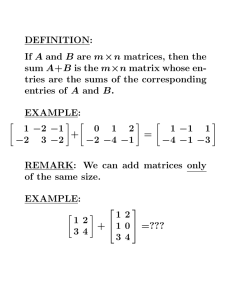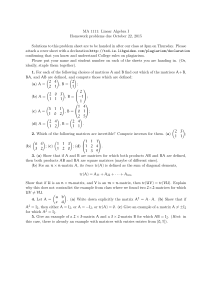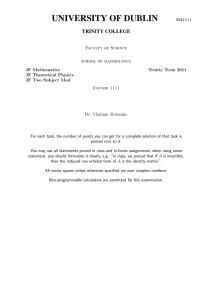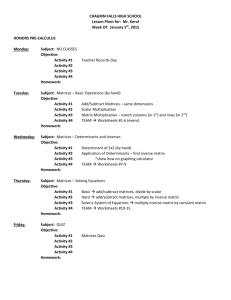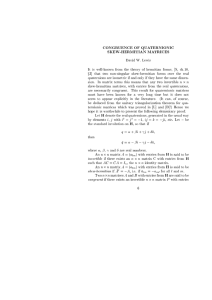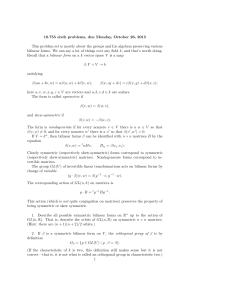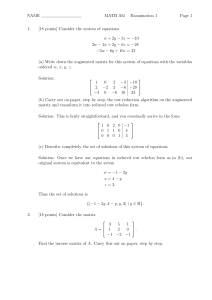Homework 1 Math 5316 Fall 2013 Due 30 Aug at 4 pm
advertisement
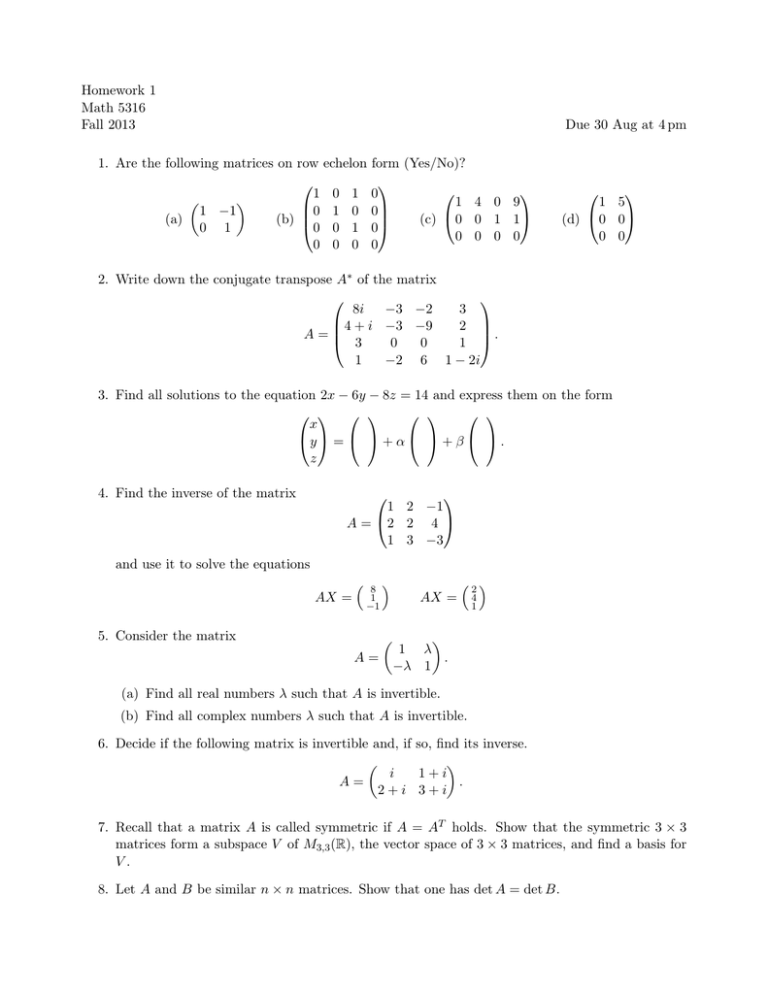
Homework 1 Math 5316 Fall 2013 Due 30 Aug at 4 pm 1. Are the following matrices on row echelon 1 0 1 0 1 0 1 −1 (a) (b) 0 0 1 0 1 0 0 0 form (Yes/No)? 0 1 4 0 9 0 (c) 0 0 1 1 0 0 0 0 0 0 1 5 (d) 0 0 0 0 2. Write down the conjugate transpose A∗ of the matrix 8i −3 −2 3 4 + i −3 −9 2 . A= 3 0 0 1 1 −2 6 1 − 2i 3. Find all solutions to the equation 2x − 6y − 8z = 14 and express them on the form x y = + α + β . z 4. Find the inverse of the matrix 1 2 −1 A = 2 2 4 1 3 −3 and use it to solve the equations AX = 8 1 −1 5. Consider the matrix AX = 2 4 1 A= 1 λ . −λ 1 (a) Find all real numbers λ such that A is invertible. (b) Find all complex numbers λ such that A is invertible. 6. Decide if the following matrix is invertible and, if so, find its inverse. i 1+i A= . 2+i 3+i 7. Recall that a matrix A is called symmetric if A = AT holds. Show that the symmetric 3 × 3 matrices form a subspace V of M3,3 (R), the vector space of 3 × 3 matrices, and find a basis for V. 8. Let A and B be similar n × n matrices. Show that one has det A = det B. 9. Decide which, if any, of the following sets of vectors form bases for R3 . You must justify your answer. 1 (a) 0 2 1 4 (b) 0 and 0 2 3 1 4 6 0 (c) 0 , 0 , and −15 2 3 −1 0 1 −1 −2 , and (d) 1 , −2 2 1 −1 −3 −2 −3 −1 , 8 (e) 1 , 1 , and 2 5 5 −1 10. Consider the matrix 1 0 2 A = −1 1 4 . 2 0 3 (a) Compute det A. (b) Find the adjoint matrix adj A. (c) Find the inverse matrix A−1 . 11. Let R3 [x] denote the vector space of polynomails with real coefficients and degree at most 2. Decide if the map T : R3 [x] → R3 [x] given by T (p(x)) = xp0 (x) is linear, and if so find its representation with respect to the standard basis (x2 , x, 1). 12. Consider the matrix 1 2 −2 1 C = 3 6 −5 4 . 1 2 0 3 (a) Find the rank of C. (b) Find a basis for the row space of C. (c) Find a basis for the column space of C. (d) Find a basis for the null space of C. 13. Find all solutions to the following system of equations 2x1 + 4x2 − 2x3 = 0 3x1 + 5x2 = 1. 14. For n × n matrices set [A, B] = AB − BA. (a) Show that [A, I] = 0 holds for all n × n matrices A. (b) Show that [B, A] = −[A, B] holds for all n × n matrices A and B. (c) Show that [A, [B, C]] + [B, [C, A]] + [C, [A, B]] = 0 holds for all n × n matrices A, B, and C.


